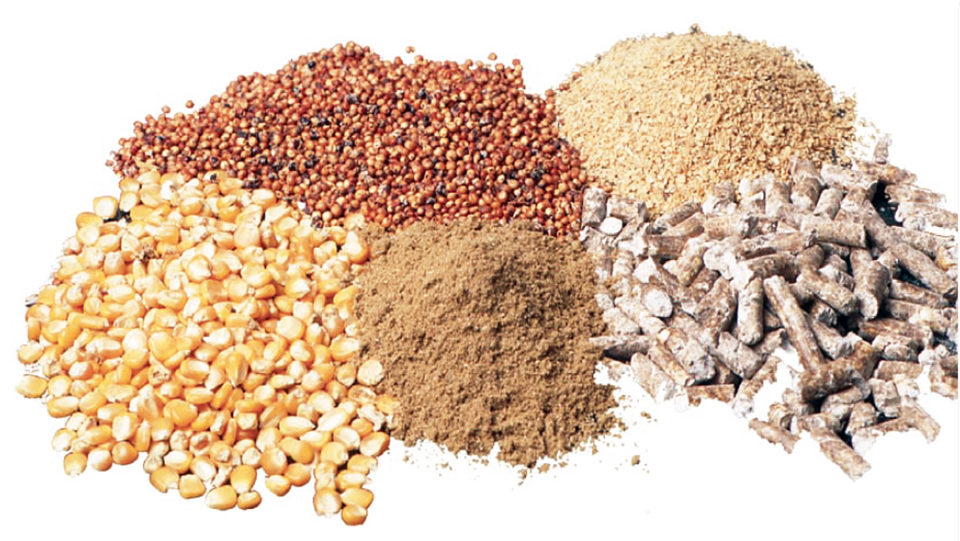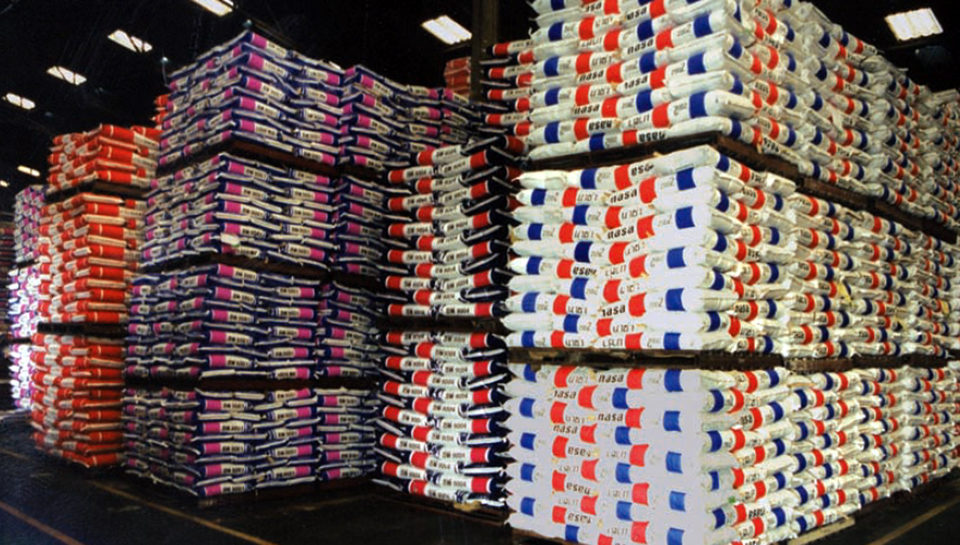Nearly all U.S. ethanol produced from corn, the foundation of livestock and poultry feeds

The increasing cost of oil is fueling a whopping increase in ethanol production in the United States. Ethanol production doubled from 6.7 billion liters in 2001 to 14.76 billion liters in 2005, and the number of ethanol production facilities increased from 56 to 81 over the same period, according to the Renewable Fuel Association.
In early 2007, there were some 109 ethanol production facilities in the U.S. – representing a total capacity of over 18.93 billion liters – with another 58 under construction. According to Feedstuffs, ethanol capacity is expected to grow to 45.42 billion liters by 2010 and 75.71 billion liters by 2020.
Corn diversion impacts animal feeds
Growth predictions like these may or may not be realized, but there is no doubt they generate immediate and long-term implications for the livestock and fish feed industries because nearly all U.S. ethanol is produced from corn, the foundation of many livestock and poultry feeds. Diverting corn to ethanol production increases the price of corn, alters the prices of alternatives such as wheat and soybeans, and increases the supply of byproducts of ethanol production.
Making ethanol from corn stalks, grasses, or other cellulosic materials may alter the corn-ethanol relationship, but not entirely and not for years. Shifting massive amounts of corn to ethanol production is a potentially disruptive force in the feed ingredient commodity world. However, alternative fuel production can be a positive force for livestock and fish feeds if ethanol producers and the feed industry join forces and work together.
Ethanol basics
A bushel of corn weighs 25.40 kg and cost U.S. $3.74 at the start of the year, according to Feedstuffs – up from $1.95 a year ago. This works out to $0.15 per kg. On average, a bushel of corn contains 14.51 kg of starch and 0.95 kg of corn oil, with the remaining 9.94 kg consisting of moisture, protein, nonstarch carbohydrates, and fiber.
Ethanol can be produced by dry or wet milling. Most ethanol in the United States is made using the dry milling method.
In dry milling, the whole grain is ground and mixed with water, enzymes are added to convert starch to dextrose, and the mash is cooked to kill bacteria. Yeast is then added to convert dextrose to ethanol and carbon dioxide, which is recovered and sold. The ethanol is recovered by distilling the mixture and purified by further distilling. The remaining material is separated into solubles and solids by centrifugation. “Distillers’ dried grains with solubles” (DDGS) are made by drying the coarse protein, fiber, and ash with the solubles.
In wet milling, the grain is steeped in water plus dilute sulfurous acid for one to two days to soften the grain, making it possible to separate germ from the corn and recover corn oil from the germ. Fiber, protein (gluten), and starch are further separated by grinding and screening. The gluten is used to produce corn gluten meal, a 60 percent-protein feed ingredient. The starch fraction is converted to ethanol by fermentation. The remaining materials – fiber, some protein and starch, plus solubles left over from the starch fermentation – are used to make corn gluten feed, a lower-protein feed ingredient with 28 percent crude protein.
The net yield of ethanol from a bushel of corn is about 10.22 liters. In 2005, ethanol production consumed about 13 percent of the U.S. corn crop to produce 14.76 billion liters of ethanol. If ethanol production doubles as predicted for 2008, about 71.12 million metric tons (MT) of corn will be consumed.
Potential protein yield
Returning to the breakdown of corn components, the potential yield of protein from 71.12 million MT of corn is 151 million MT. This is a lot of protein. Given the fact that separation of protein from starch and other constituents of corn is not 100 percent, it is still conceivable that 100 million MT of protein could be recovered annually from corn processing to produce ethanol, but this would require modification of the processes currently used in ethanol production.
As mentioned, most ethanol production is produced by the dry method in the United States, which resulted in 7.26 million MT of DDGS in 2006. The crude protein content of DDGS ranges 28 to 32 percent, making it a desirable ingredient in feeds for beef cattle and dairy cows. Its use in swine feeds is somewhat of a problem due to the residual oil and fiber concentration in the DDGS.
For fish feeds, the 7.2 percent fiber content limits its use, at least for species of fish such as rainbow trout reared in systems that have restrictions on total suspended solids in effluents. Also, the relatively low protein content means that DDGS will never help feed formulators lower fishmeal or protein concentrate levels. DDGS will be limited to feeds for tilapia, catfish, carp, or other species that can utilize their roughly 50 percent carbohydrate content.

Outlook
At the present time, corn or corn-based ingredients are used in feeds for catfish and tilapia in the United States, Mexico and Central America. Gelatinized corn starch is used in salmon feeds in Europe as a nutritional binder.
The price for corn gluten meal increased by 10 percent in 2006 to U.S. $412 per MT, reflecting about the same degree of increase seen for wheat, soybean meal and cottonseed meal. The price of corn increased substantially, however, which accordingly increased the costs of swine and poultry feeds.
It is likely that in a few years, the usual U.S. surplus of corn will disappear, and the amount of corn acreage will increase, likely at the expense of soybean production and possibly other crops. Looking forward, prices of ingredients are therefore likely to increase further as demand for corn for ethanol grows.
(Editor’s Note: This article was originally published in the May/June 2007 print edition of the Global Aquaculture Advocate.)
Now that you've finished reading the article ...
… we hope you’ll consider supporting our mission to document the evolution of the global aquaculture industry and share our vast network of contributors’ expansive knowledge every week.
By becoming a Global Seafood Alliance member, you’re ensuring that all of the pre-competitive work we do through member benefits, resources and events can continue. Individual membership costs just $50 a year. GSA individual and corporate members receive complimentary access to a series of GOAL virtual events beginning in April. Join now.
Not a GSA member? Join us.
Author
-
Dr. Ronald W. Hardy
Director, Aquaculture Research Institute
University of Idaho
3059F National Fish Hatchery Road
Hagerman, Idaho 83332 USA
Tagged With
Related Posts

Aquafeeds
A look at corn distillers dried grains with solubles
Corn distillers dried grains with solubles are an economical source of energy, protein and digestible phosphorus to reduce feed costs and fishmeal usage.

Aquafeeds
A new nutrient for aquaculture, from microbes that consume carbon waste
Biotechnology firm NovoNutrients aims to produce a line of nutraceutical aquafeed additives as well as a bulk feed ingredient that can supplement fishmeal. Its process includes feeding carbon dioxide from industrial gas to a “microbial consortium” starring hydrogen-oxidizing bacteria.

Health & Welfare
A study of Zoea-2 Syndrome in hatcheries in India, part 1
Indian shrimp hatcheries have experienced larval mortality in the zoea-2 stage, with molt deterioration and resulting in heavy mortality. Authors investigated the problem holistically.

Responsibility
Aquaculture Exchange: Alan Shaw, Calysta
Turn fuel into animal food? Calysta can do that. The California biotech company is now hoping for greater buy-in from aquaculture, its target market. CEO Alan Shaw talks about the potential of FeedKind and its ambitious plans for 2016 and beyond.


